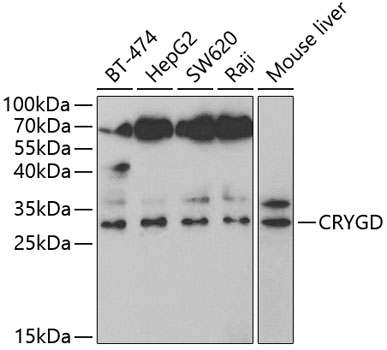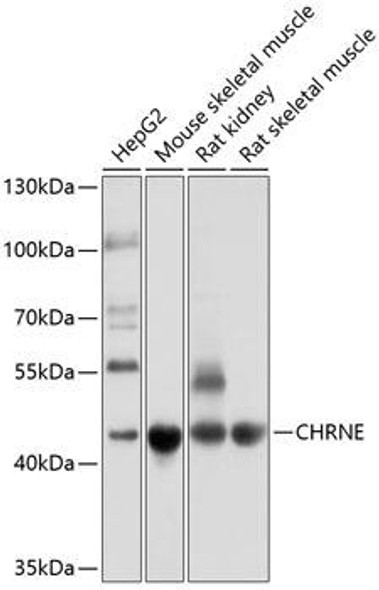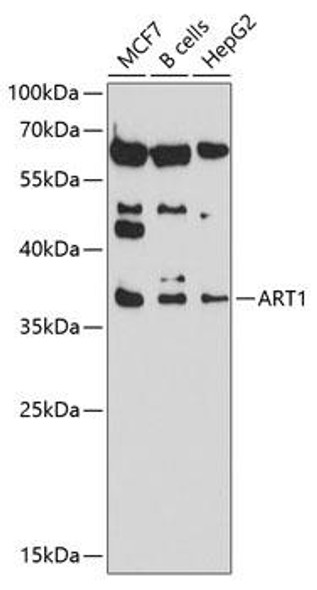Description
CRYGD Rabbit Polyclonal Antibody (CAB5740)
The Gamma-Crystallin D Polyclonal Antibody (CAB5740) is a valuable tool for researchers studying gamma-crystallin D, a protein involved in the structure and function of the eye lens. This antibody, produced in rabbits, has high reactivity with human samples and has been validated for use in Western blot applications. By specifically binding to gamma-crystallin D, this antibody enables the detection and analysis of the protein in a variety of cell types, making it ideal for studies in ophthalmology and vision research.
Gamma-crystallin D is essential for maintaining the transparency and refractive properties of the lens, and mutations in this protein have been linked to cataracts and other vision disorders. Research into the function and regulation of gamma-crystallin D is critical for understanding the mechanisms of these conditions and developing potential therapies. The Gamma-Crystallin D Polyclonal Antibody is a valuable tool for investigating the role of this important protein in eye health and disease.
| Product Name: | CRYGD Rabbit Polyclonal Antibody |
| SKU: | CAB5740 |
| Size: | 20uL, 100uL |
| Isotype: | IgG |
| Host Species: | Rabbit |
| Reactivity: | Human,Mouse,Rat |
| Immunogen: | Recombinant fusion protein containing a sequence corresponding to amino acids 18-117 of human CRYGD (NP_008822.2). |
| Sequence: | ECSS DHPN LQPY LSRC NSAR VDSG CWML YEQP NYSG LQYF LRRG DYAD HQQW MGLS DSVR SCRL IPHS GSHR IRLY ERED YRGQ MIEF TEDC SCLQ DRFR |
| Tested Applications: | WB ELISA |
| Recommended Dilution: | WB,1:500 - 1:2000 |
| Synonyms: | CCP; PCC; CACA; CCA3; CRYG4; CTRCT4; cry-g-D; CRYGD |
| Positive Sample: | BT-474,HepG2,SW620,Raji,Mouse liver |
| Conjugate: | Unconjugated |
| Cellular Localization: | cytoplasm, nucleus |
| Calculated MW: | 21kDa |
| Observed MW: | 26kDa |
Crystallins are separated into two classes: taxon-specific, or enzyme, and ubiquitous. The latter class constitutes the major proteins of vertebrate eye lens and maintains the transparency and refractive index of the lens. Since lens central fiber cells lose their nuclei during development, these crystallins are made and then retained throughout life, making them extremely stable proteins. Mammalian lens crystallins are divided into alpha, beta, and gamma families; beta and gamma crystallins are also considered as a superfamily. Alpha and beta families are further divided into acidic and basic groups. Seven protein regions exist in crystallins: four homologous motifs, a connecting peptide, and N- and C-terminal extensions. Gamma-crystallins are a homogeneous group of highly symmetrical, monomeric proteins typically lacking connecting peptides and terminal extensions. They are differentially regulated after early development. Four gamma-crystallin genes (gamma-A through gamma-D) and three pseudogenes (gamma-E, gamma-F, gamma-G) are tandemly organized in a genomic segment as a gene cluster. Whether due to aging or mutations in specific genes, gamma-crystallins have been involved in cataract formation.
| Purification Method: | Affinity purification |
| Gene ID: | 1421 |
| Storage Buffer: | Store at -20℃. Avoid freeze / thaw cycles.Buffer: PBS with 0.01% thimerosal,50% glycerol,pH7.3. |












